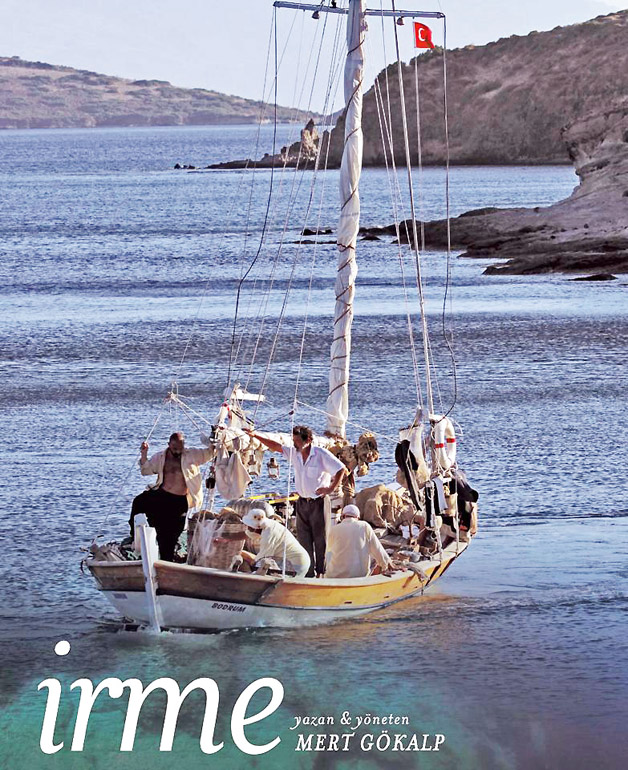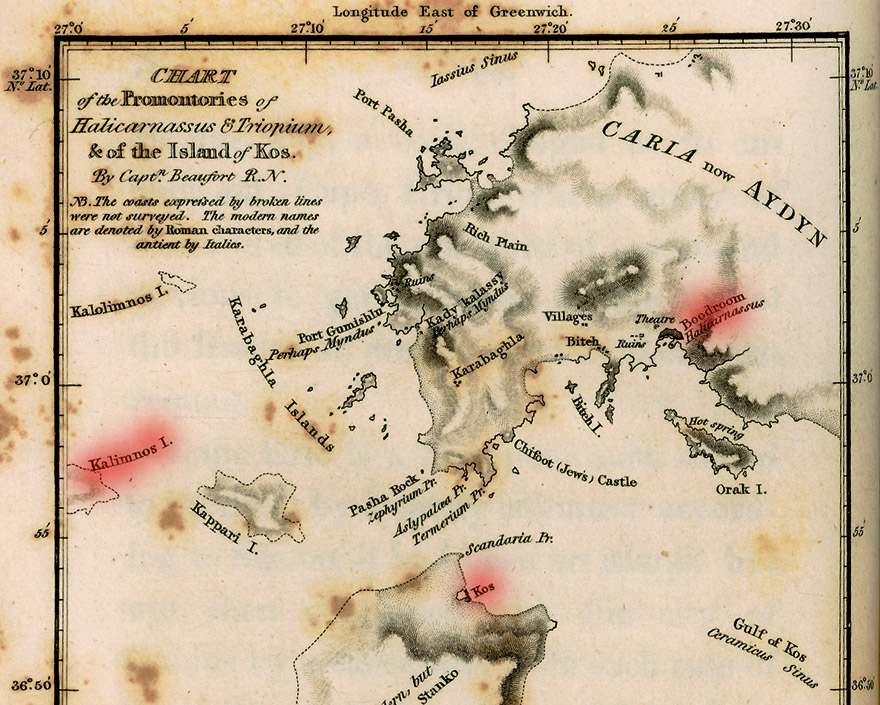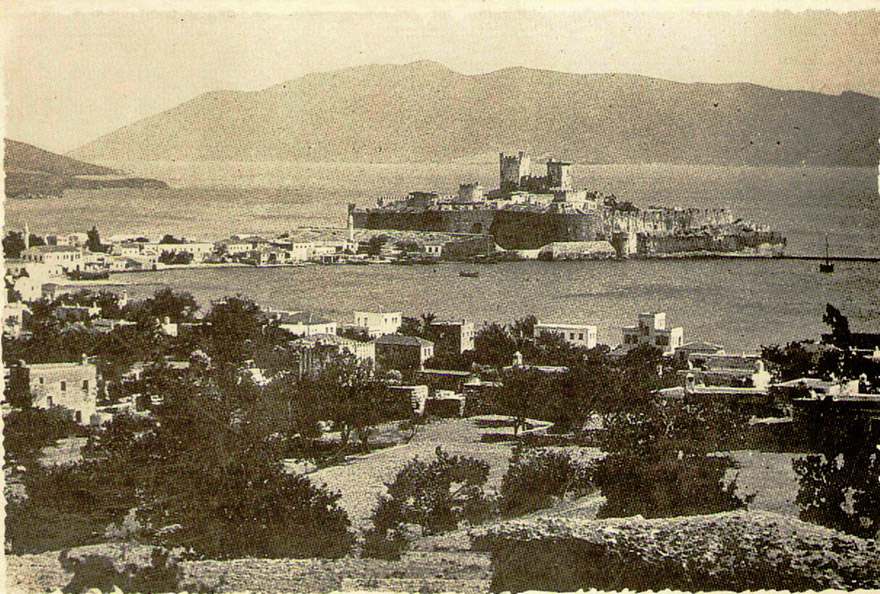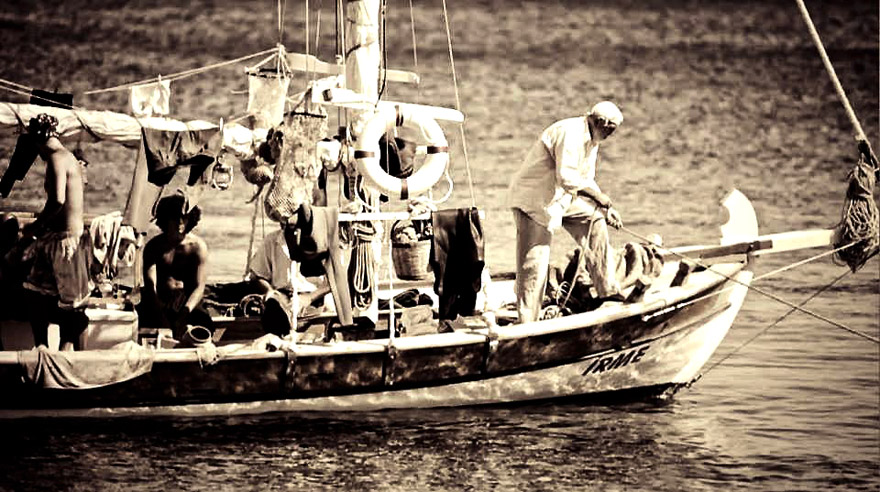I recently had the pleasure to learn of IRME, a film project based in Bodrum, Turkey through its creator, Mert Gokalp. The short film deals with sponge diving and the passage of this way of life into the past as a result of the sponge blight. The impacts of the sponge blight have been significant in this coastal fishing town and many other similar towns throughout the Aegean Sea.

The film conveys messages on several levels. The primary conflict is between a boy longing to dive and work in the sea, his father a sponge boat captain who wants him to stay on land and the boy's mentor, a renowned sponge diver, now crippled for life after a bad case of the bends. On other levels the film treats the fading into the past of this fishing town to be replaced with a tourist destination rife with resorts and night clubs. Finally it offers some insights on new ecological imperatives likely brought on by climate change likely an important cause of the sponge blight and poor resource husbandry practices. Mert wanted to show the Bodrum of the past along with the dramatic stories of divers, with so many lost and injured working the sea. Production photos are from the film's Facebook page at https://www.facebook.com/pages/IRME/1477722369146756

IRME's setting involves a boat and its working crew in the middle of the Mediterranean sea in the 1970s on the brink of the collapse of the sponge fishery with a blight wiping out stocks. The sponge blight substantially reduces the quantity, quality of the sponges, reducing size and changing them to a brittle texture ruining the commercial and practical value. The father also a sponge captain, never wanted his boy to work on the sea for many reasons. The trials, high risk of injury and death including some family and friends in the past, makes him want his son to take up farming on land instead. The boy finds work in another boat driven by his longing for the sea. The boy learns diving from the cripple Omer, a famous diver working on that boat who suffered paralysis from the bends. Time passes and the cripple and the boy end up working on the father's boat. There is an acute sponge shortage with dive after dive resulting in no sponges being found. The crew is upset with building frustration with no prospect in sight but to continue searching. The mounting tension among the captain/father, the boy and the cripple, conveys the viewer into the desolation of the broad sea, barren bottom with the harsh realities of the changing times.

Part of an 1817 chart showing the southeastern Aegean Sea containing Bodrum, Turkey to the east, the focus on this film. Also the Greeks islands of Kos to the south and Kalminos, center of sponge commerce to the west are highlighted on the chart. Kalminos was the commercial center of the sponge industry for the region. Sponges recovered by the Bodrum fleet were ultimately sold in Kalminos which exercised considerable influence on the area. There were a lot of similarities between Greek and Turkish sponge diving operations. In large measure they shared fishing areas, technology, even divers at times and maintained friendships.

Mert Gokalp is the director, script writer and underwater DOP for the film. He is a marine scientist, photographer/videographer and documentary maker born in Ankara, 1978. He did graduate work at South Florida's own RSMAS institution in Miami. He is currently working on his PHD through the University Of Wageningen. He worked as a marine biologist in 6th & 7th frame European Union projects. He produced 4 individual photography exhibitions along with a guidebook for Turkish Marine Species & a smartphone application for Mediterranean marine species called ‘Doga Rehberi’. He has been working as a freelancer since 2006 involved in nature documentaries as an underwater camera operator; Labyrinth-VPRO, Sponges & Corals episodes - HET KLOKHUIS - NTR, Caretta caretta - IZTV. Currently working on 2 underwater documentaries and an underwater photography project. Mert is shown above loaded for bear with underwater tech, shooting amphora on a wreck off Kas, Turkey.

The film conveys messages on several levels. The primary conflict is between a boy longing to dive and work in the sea, his father a sponge boat captain who wants him to stay on land and the boy's mentor, a renowned sponge diver, now crippled for life after a bad case of the bends. On other levels the film treats the fading into the past of this fishing town to be replaced with a tourist destination rife with resorts and night clubs. Finally it offers some insights on new ecological imperatives likely brought on by climate change likely an important cause of the sponge blight and poor resource husbandry practices. Mert wanted to show the Bodrum of the past along with the dramatic stories of divers, with so many lost and injured working the sea. Production photos are from the film's Facebook page at https://www.facebook.com/pages/IRME/1477722369146756

IRME's setting involves a boat and its working crew in the middle of the Mediterranean sea in the 1970s on the brink of the collapse of the sponge fishery with a blight wiping out stocks. The sponge blight substantially reduces the quantity, quality of the sponges, reducing size and changing them to a brittle texture ruining the commercial and practical value. The father also a sponge captain, never wanted his boy to work on the sea for many reasons. The trials, high risk of injury and death including some family and friends in the past, makes him want his son to take up farming on land instead. The boy finds work in another boat driven by his longing for the sea. The boy learns diving from the cripple Omer, a famous diver working on that boat who suffered paralysis from the bends. Time passes and the cripple and the boy end up working on the father's boat. There is an acute sponge shortage with dive after dive resulting in no sponges being found. The crew is upset with building frustration with no prospect in sight but to continue searching. The mounting tension among the captain/father, the boy and the cripple, conveys the viewer into the desolation of the broad sea, barren bottom with the harsh realities of the changing times.

Part of an 1817 chart showing the southeastern Aegean Sea containing Bodrum, Turkey to the east, the focus on this film. Also the Greeks islands of Kos to the south and Kalminos, center of sponge commerce to the west are highlighted on the chart. Kalminos was the commercial center of the sponge industry for the region. Sponges recovered by the Bodrum fleet were ultimately sold in Kalminos which exercised considerable influence on the area. There were a lot of similarities between Greek and Turkish sponge diving operations. In large measure they shared fishing areas, technology, even divers at times and maintained friendships.

Mert Gokalp is the director, script writer and underwater DOP for the film. He is a marine scientist, photographer/videographer and documentary maker born in Ankara, 1978. He did graduate work at South Florida's own RSMAS institution in Miami. He is currently working on his PHD through the University Of Wageningen. He worked as a marine biologist in 6th & 7th frame European Union projects. He produced 4 individual photography exhibitions along with a guidebook for Turkish Marine Species & a smartphone application for Mediterranean marine species called ‘Doga Rehberi’. He has been working as a freelancer since 2006 involved in nature documentaries as an underwater camera operator; Labyrinth-VPRO, Sponges & Corals episodes - HET KLOKHUIS - NTR, Caretta caretta - IZTV. Currently working on 2 underwater documentaries and an underwater photography project. Mert is shown above loaded for bear with underwater tech, shooting amphora on a wreck off Kas, Turkey.







